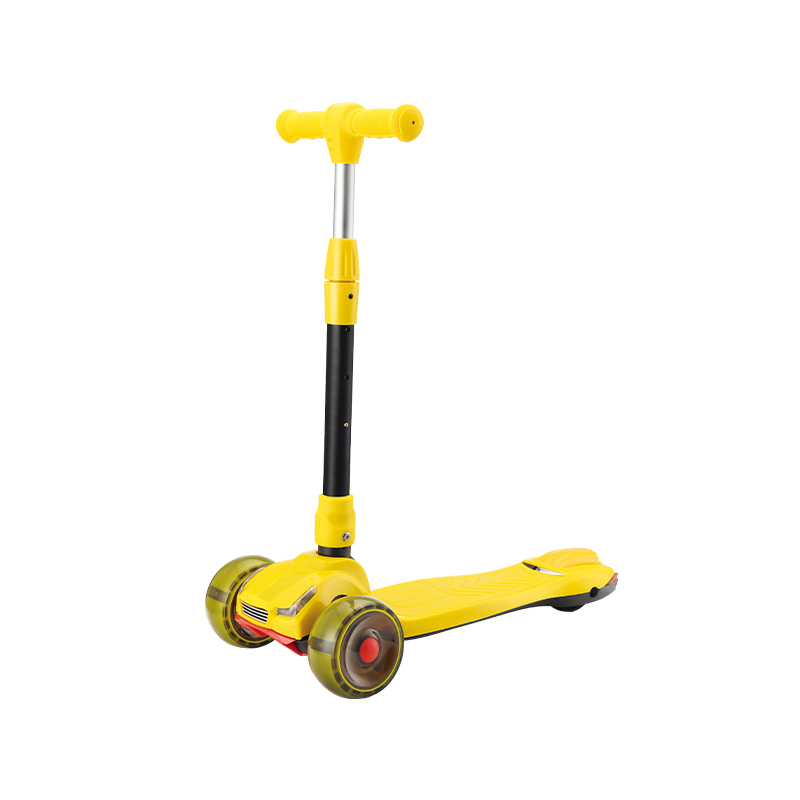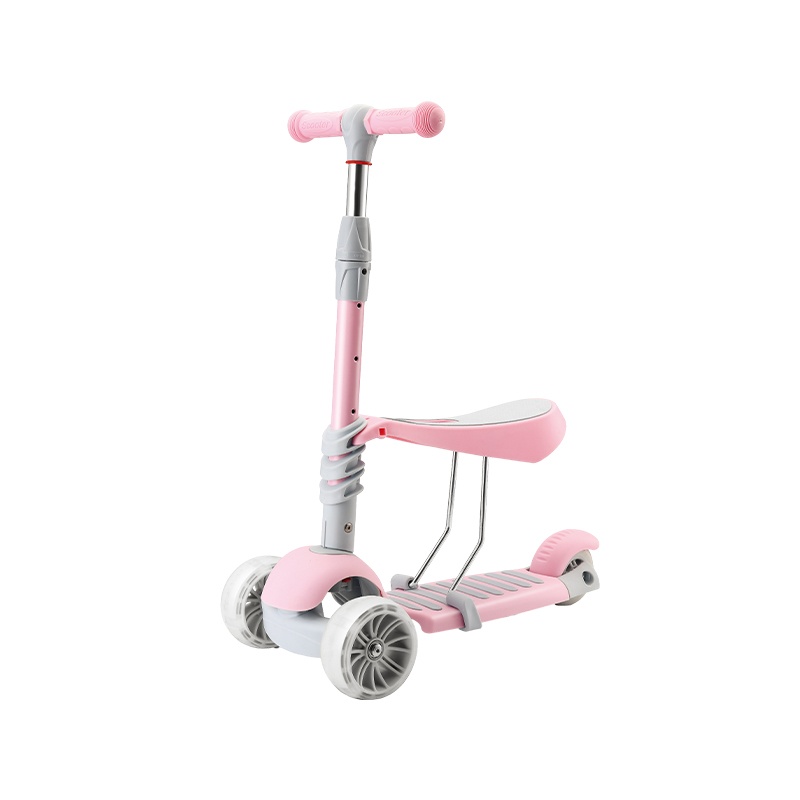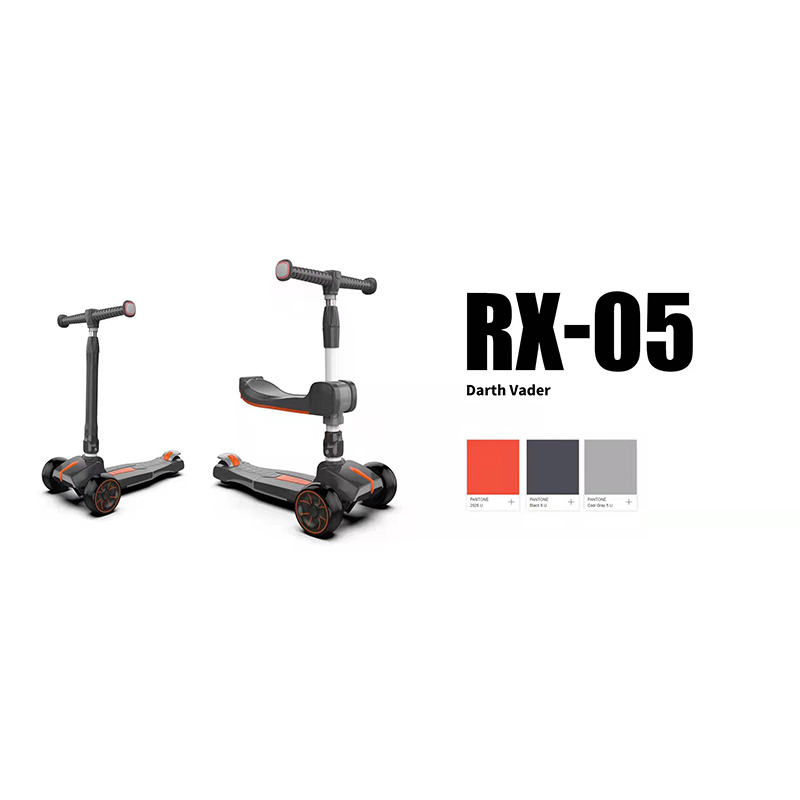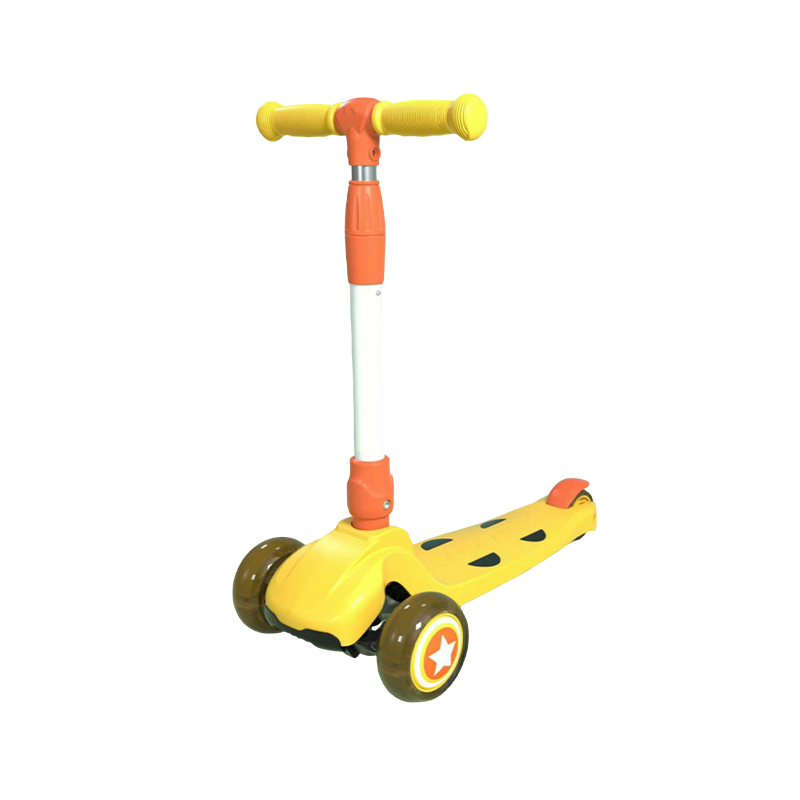What is the role of children's scooter in improving sensory integration and coordination?
Release Time : 2025-07-02
In the process of children's growth, developing good sensory integration and coordination is essential for their physical and mental health. As a popular outdoor toy, children's scooter not only provides children with opportunities for entertainment and exercise, but also promotes the development of their sensory integration and coordination without knowing it.
1. What is sensory integration and coordination?
Sensory integration and coordination refers to the ability of an individual to obtain information through multiple sensory systems such as vision, hearing, and touch, and integrate it to make appropriate responses. Good sensory integration and coordination can help improve children's attention, memory, learning ability, and social skills. However, in modern society, due to the popularity of electronic devices and the reduction of outdoor activity time, many children are at risk of sensory integration disorders. Outdoor sports equipment such as scooters have become an effective tool to improve this situation.
2. Cultivation of a sense of balance
A notable feature of a scooter is that it requires the user to maintain body balance. When children stand on a scooter, they need to constantly adjust their center of gravity to maintain stability. This dynamic balance exercise can effectively stimulate the vestibular system, an important nervous system responsible for sensing changes in head position and regulating body balance. Through repeated practice, children gradually learn how to adjust their posture according to different speeds and directions, thereby enhancing their sense of balance.
In addition, scooters also encourage children to explore different terrains, such as flat ground, small ramps and even irregular brick roads. These ever-changing environments further challenge their balance ability, prompting the brain to process information from various senses more flexibly and improve the ability to deal with complex situations.
3. Hand-eye coordination and spatial cognition
In addition to the sense of balance, scooters can greatly promote children's hand-eye coordination and spatial cognition. In order to smoothly control the scooter forward or turn, children must learn to control the direction of the handlebars with both hands and observe the road conditions ahead to avoid obstacles at the same time. This not only exercises their fine motor skills, but also improves the eyes' acuity to changes in the surrounding environment.
More importantly, in this process, children begin to establish an understanding of the relative position relationship between their bodies and external objects. For example, they learn to estimate the distance between themselves and the obstacles in front of them, and make corresponding decisions to slow down or turn accordingly. This spatial cognitive ability is one of the basic skills for participating in more complex sports activities and even in daily life in the future.
4. Muscle strength and endurance training
During the sliding process, children need to use the strength of their legs, arms and core muscles to propel themselves forward or maintain a stable posture. Long-term persistence in riding a scooter can effectively enhance the muscle strength of these parts, while also improving the overall physical endurance level. Strong and elastic muscles not only help to better complete various movements, but also lay a solid foundation for other forms of physical exercise.
It is worth mentioning that because the speed of scooters is relatively slow and easy to control, even younger children can get enough exercise from them without worrying about the risk of excessive fatigue or injury.
5. Self-confidence and independence training
As children become more and more proficient on scooters, they will find that they can easily handle this seemingly difficult activity. This sense of accomplishment will turn into self-confidence and motivate them to continue to try new challenges. More importantly, scooters give children an opportunity to explore the world independently, allowing them to freely choose routes and determine speeds under the premise of safety, thereby cultivating independent thinking and problem-solving abilities.
When children successfully overcome the initial learning barriers, they tend to have greater confidence in their abilities and are willing to accept more types of sports or other challenging tasks. This is undoubtedly of great significance to shaping a positive attitude towards life.
6. Social interaction and teamwork
Although scooters are often regarded as an individual sport, they also provide children with valuable social opportunities. In parks or communities, children often get together to share their riding experiences and even organize small competitions. Through such interactions, they learn how to communicate with other friends, abide by rules, and respect other people's opinions, which are the basic qualities necessary to establish good interpersonal relationships.
In addition, some special scooters for two or more people can also promote the development of teamwork. In this case, children need to work closely together to successfully achieve a common goal, which is undoubtedly a test and exercise of their collaborative ability.
In summary, children's scooters are not just a simple toy, but also an ideal tool to help children improve their sensory coordination ability in an all-round way. From balance to hand-eye coordination, to the cultivation of muscle strength and self-confidence, the improvement of each skill is inseparable from daily scooter training. In this process, the children not only got physical exercise, but also gained valuable growth experience and happy time.
1. What is sensory integration and coordination?
Sensory integration and coordination refers to the ability of an individual to obtain information through multiple sensory systems such as vision, hearing, and touch, and integrate it to make appropriate responses. Good sensory integration and coordination can help improve children's attention, memory, learning ability, and social skills. However, in modern society, due to the popularity of electronic devices and the reduction of outdoor activity time, many children are at risk of sensory integration disorders. Outdoor sports equipment such as scooters have become an effective tool to improve this situation.
2. Cultivation of a sense of balance
A notable feature of a scooter is that it requires the user to maintain body balance. When children stand on a scooter, they need to constantly adjust their center of gravity to maintain stability. This dynamic balance exercise can effectively stimulate the vestibular system, an important nervous system responsible for sensing changes in head position and regulating body balance. Through repeated practice, children gradually learn how to adjust their posture according to different speeds and directions, thereby enhancing their sense of balance.
In addition, scooters also encourage children to explore different terrains, such as flat ground, small ramps and even irregular brick roads. These ever-changing environments further challenge their balance ability, prompting the brain to process information from various senses more flexibly and improve the ability to deal with complex situations.
3. Hand-eye coordination and spatial cognition
In addition to the sense of balance, scooters can greatly promote children's hand-eye coordination and spatial cognition. In order to smoothly control the scooter forward or turn, children must learn to control the direction of the handlebars with both hands and observe the road conditions ahead to avoid obstacles at the same time. This not only exercises their fine motor skills, but also improves the eyes' acuity to changes in the surrounding environment.
More importantly, in this process, children begin to establish an understanding of the relative position relationship between their bodies and external objects. For example, they learn to estimate the distance between themselves and the obstacles in front of them, and make corresponding decisions to slow down or turn accordingly. This spatial cognitive ability is one of the basic skills for participating in more complex sports activities and even in daily life in the future.
4. Muscle strength and endurance training
During the sliding process, children need to use the strength of their legs, arms and core muscles to propel themselves forward or maintain a stable posture. Long-term persistence in riding a scooter can effectively enhance the muscle strength of these parts, while also improving the overall physical endurance level. Strong and elastic muscles not only help to better complete various movements, but also lay a solid foundation for other forms of physical exercise.
It is worth mentioning that because the speed of scooters is relatively slow and easy to control, even younger children can get enough exercise from them without worrying about the risk of excessive fatigue or injury.
5. Self-confidence and independence training
As children become more and more proficient on scooters, they will find that they can easily handle this seemingly difficult activity. This sense of accomplishment will turn into self-confidence and motivate them to continue to try new challenges. More importantly, scooters give children an opportunity to explore the world independently, allowing them to freely choose routes and determine speeds under the premise of safety, thereby cultivating independent thinking and problem-solving abilities.
When children successfully overcome the initial learning barriers, they tend to have greater confidence in their abilities and are willing to accept more types of sports or other challenging tasks. This is undoubtedly of great significance to shaping a positive attitude towards life.
6. Social interaction and teamwork
Although scooters are often regarded as an individual sport, they also provide children with valuable social opportunities. In parks or communities, children often get together to share their riding experiences and even organize small competitions. Through such interactions, they learn how to communicate with other friends, abide by rules, and respect other people's opinions, which are the basic qualities necessary to establish good interpersonal relationships.
In addition, some special scooters for two or more people can also promote the development of teamwork. In this case, children need to work closely together to successfully achieve a common goal, which is undoubtedly a test and exercise of their collaborative ability.
In summary, children's scooters are not just a simple toy, but also an ideal tool to help children improve their sensory coordination ability in an all-round way. From balance to hand-eye coordination, to the cultivation of muscle strength and self-confidence, the improvement of each skill is inseparable from daily scooter training. In this process, the children not only got physical exercise, but also gained valuable growth experience and happy time.







